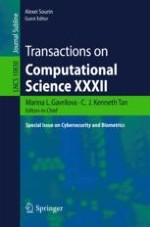2018 | OriginalPaper | Chapter
NeuroFeedback Training for Enhancement of the Focused Attention Related to Athletic Performance in Elite Rifle Shooters
Authors : Yisi Liu, Salem Chandrasekaran Harihara Subramaniam, Olga Sourina, Eesha Shah, Joshua Chua, Kirill Ivanov
Published in: Transactions on Computational Science XXXII
Publisher: Springer Berlin Heidelberg
Activate our intelligent search to find suitable subject content or patents.
Select sections of text to find matching patents with Artificial Intelligence. powered by
Select sections of text to find additional relevant content using AI-assisted search. powered by
